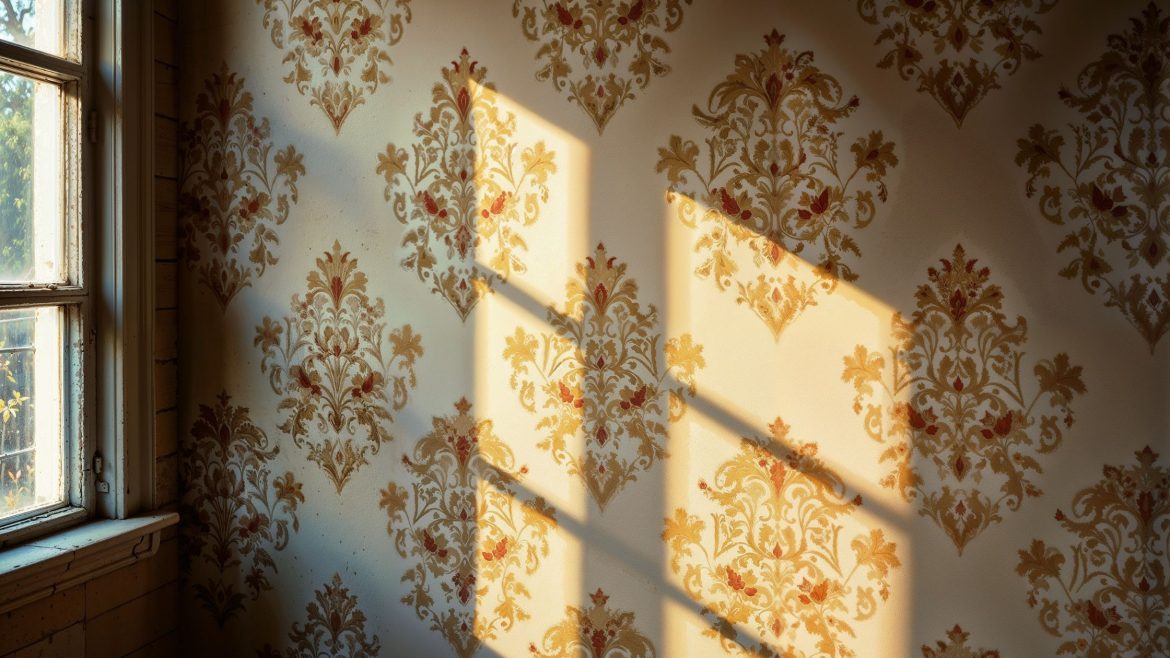If your lounge still wears last decade’s florals, you can strip wallpaper cleanly and start fresh. The trick is choosing a method that suits your wall type, working wet, and protecting the plaster or drywall underneath. Here is a practical, safety-first guide with expert-backed tips and a clear order of operations.
ALSO SEE: 6 Creative ways to incorporate food-inspired decor into your home
Before you start
Clear the room, lift décor off walls and cover floors and skirtings with plastic sheeting or old towels. Turn off the power at the mains for the room you are working in, then remove switch and socket faceplates so liquid cannot track in behind. Older homes may have legacy lead paint beneath paper. If your house predates 1978, use lead-safe practices, avoid dry sanding, keep dust down, and ventilate well. If possible, test a discreet corner. Many modern papers are peelable, with a vinyl top layer that lifts dry and a backing that soaks off. This quick test tells you how gentle you can be.
Choose your removal method
Start with the least aggressive option that works on your wall. Move up only if needed.
Warm water with vinegar or a mild softener
Best for peelable papers, temporary wallpapers, and sound drywall. If the surface is vinyl, score lightly so the liquid can reach the paste. Mix equal parts warm water and white vinegar, or three parts warm water to one part fabric softener. Saturate a small section, wait a few minutes, then lift with a wide plastic scraper, keeping the blade flat so you slide under paper rather than gouge the wall. Rewet to remove paste, wipe with clean water, and allow to dry.
Steam
Best for old or stubborn papers, multiple layers, and plaster walls. A wallpaper steamer softens heavy paste and brittle paper. Hold the plate to the wall for short bursts, then peel and scrape while warm. Do not linger in one spot or you can blister drywall paper or blow plaster. On plaster, generous wetting with steam is safer than repeated chemical applications.
Liquid gel or spray strippers
Best for vinyl-coated papers and bathrooms. Vinyl sheds water, so score the top layer, apply a commercial stripper, and let it dwell before lifting with a scraper. Gels cling on vertical surfaces and are tidier in tight spaces. Rinse well afterwards.
Peel first, soak second
Best for modern peelable wallpapers. Peel the decorative layer dry, then soak and remove the backing as per warm water method. This uses less liquid and reduces risk on drywall.
Technique that protects your walls
Work top to bottom in sections and keep surfaces wet rather than forcing dry paper. Plastic scrapers are kinder than metal. If you must use a metal blade, keep it very flat. On vinyl, score sparingly so you do not carve channels into plaster. Wipe up runs before they reach skirtings and sockets. Patience and wet work are what professionals rely on for speed with minimal damage.
Clean, neutralise and prime
Adhesive residue will telegraph through paint and can cause bubbling later. Wash the bare wall with warm water. Sugar-soap solutions are commonly used in South Africa and the UK to cut paste and grime. Wipe, rinse, and allow to dry fully. Seal porous, previously papered walls with a problem-surface sealer before painting or re-papering. This locks any residual paste and stabilises chalky areas for a smoother finish.
Safety and waste tips
Hot steamers can scald. Never open or refill while pressurised and let the unit cool before topping up. Keep dust down in older properties and use PPE if lead paint is possible. Do not pour thick paste down sinks where it can set in traps. Thin it well and dispose of it via a suitable drain, or let it dry and bin it according to local guidance.
Troubleshooting
If the paper will not budge, increase dwell time and re-soak, then switch to steam. If you expose fuzzy or torn drywall paper, stop scraping, let the area dry, then seal with a problem-surface sealer before filling and sanding lightly. If you see a patchy paste sheen after drying, rewash with warm water, change cloths often, allow to dry fully, then prime before any topcoat.
ALSO SEE:
Featured Image: Canva Stock Images

